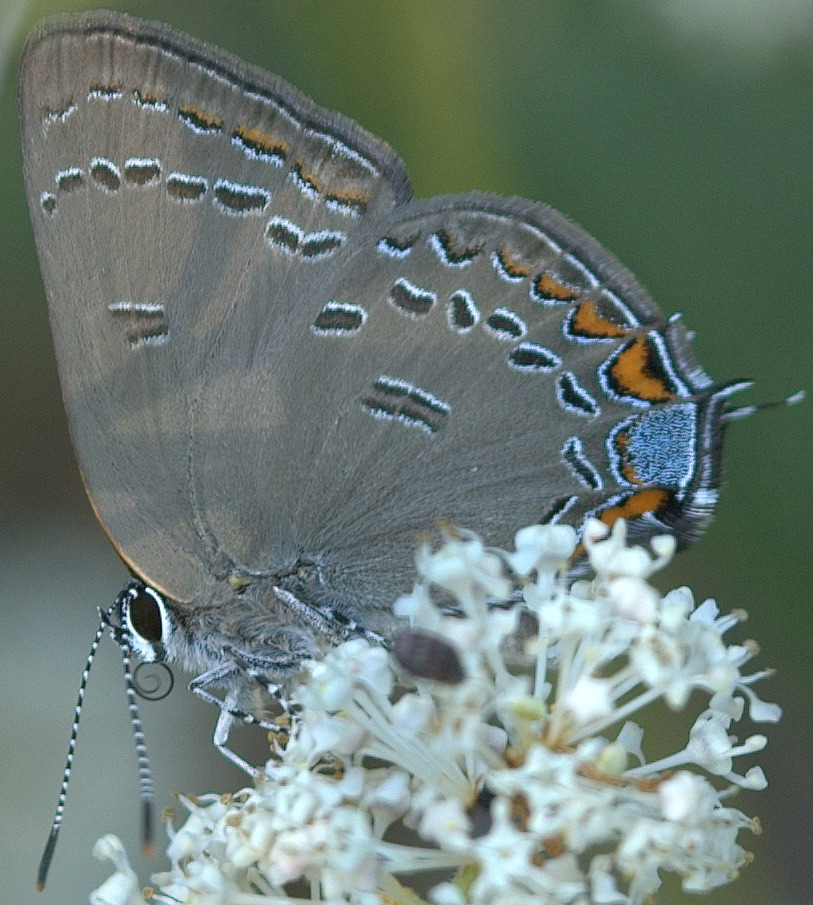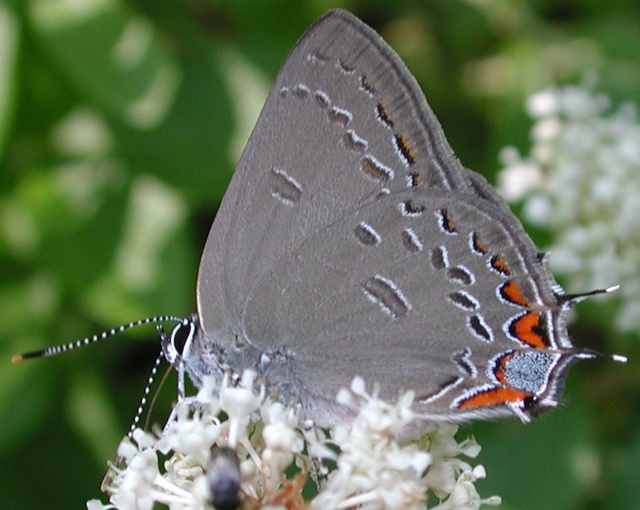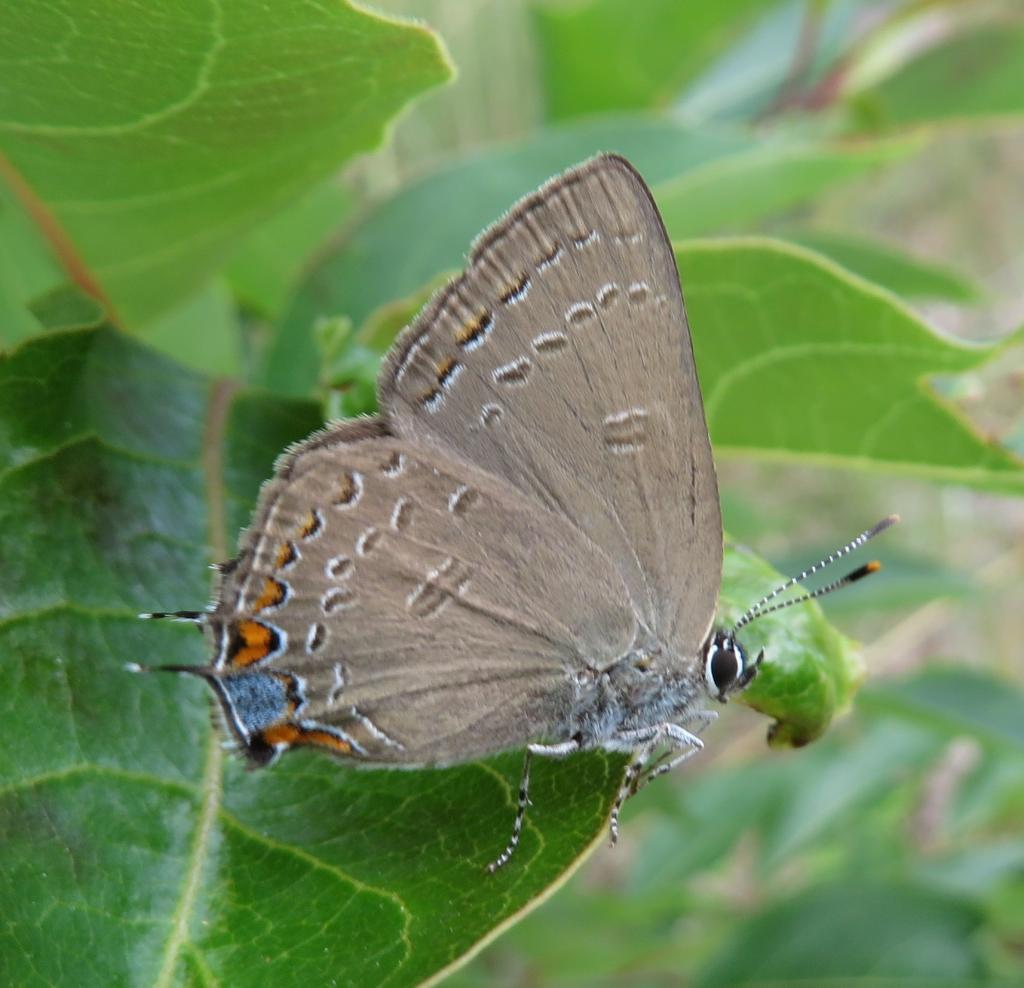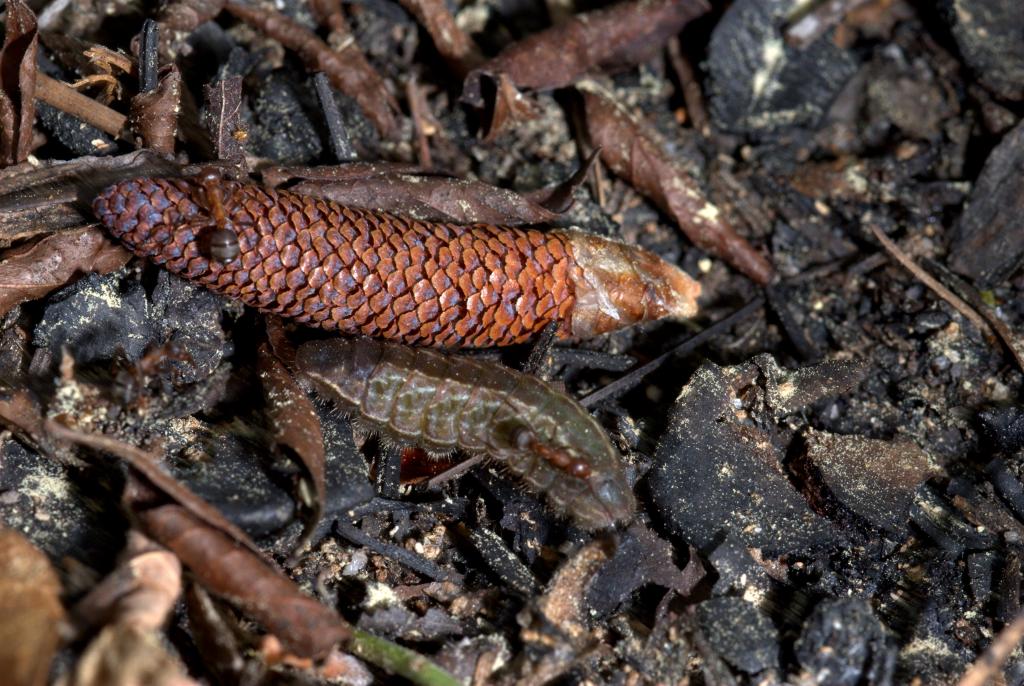|
| Common Name | Edwards' Hairstreak by Scott Hartley => Weymouth Woods-SNP, 2004-06-05
[View PDF]
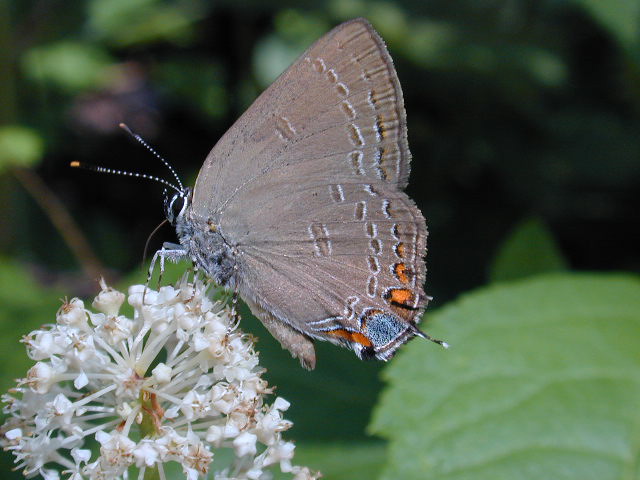 Click to enlarge Click to enlarge
[Google Images] GBIF [Global Distribution ] BoA [Images ] iNaturalist |
| Scientific Name | Satyrium edwardsii
|
| Link to BAMONA species account. |
| Map | Click on a county for list of all database records for the species in that county.
 |
| Distribution | DISTRIBUTION: Primarily the Sandhills, and barely eastward to the adjacent western Coastal Plain; a 2023 photo record expanded the range eastward to Wayne County. Spottily distributed in the Mountains and probably the foothills (but only two recent records from these regions). No records from essentially all of the Piedmont, though might be present at some monadnocks in that province. Absent from nearly all of the Coastal Plain, other than the Sandhills. Currently known from just 12 counties in North Carolina.
|
| Abundance | ABUNDANCE: Rare to locally uncommon in the Sandhills, but very rare and probably local elsewhere. Presumably occurs in the Piedmont, where it must be extremely rare. Hardly any recent records for the Mountains, suggestive of a decline for unknown reasons.
|
| Flight | FLIGHT PERIOD: One brood -- late May to early July. Species is present in late June and July in the Mountains; in the Sandhills the flight period is from late May into late June.
|
| Habitat | HABITAT: Throughout most of the range, the species occurs in areas of scrub oaks (Quercus spp.), on hilltops or in other dry or rocky sites. The most common host species within its overall range -- Bear Oak (Quercus ilicifolia) -- is rare in NC, and the butterfly obviously has other host oak species in NC. In the Mountains it is known from the vicinity of outcrops and other openings near mountaintops. In the Sandhills it occurs in xeric areas of scrub oaks, such as near Turkey Oaks (Q. laevis).
|
|
| | Plants | FOOD AND NECTAR PLANTS: Various species of scrub oaks; Bear Oak is the most common foodplant north of NC. In North Carolina, the foodplants are various stunted oaks near mountaintops, and scrub oaks such as Blackjack Oak (Q. marilandica) in the Sandhills. (It is not clear if Turkey Oak is a foodplant in the Sandhills, but Blackjack Oak has been documented as a foodplant there). Steve Hall indicates that the presence of one or several ant species is very important in the selection of foodplants. This species nectars somewhat infrequently. Steve Hall saw several nectaring on hydrangea (Hydrangea spp.) in the mountains of NC, and I have seen them nectaring on New Jersey Tea (Ceanothus americanus) and on Sourwood (Oxydendrum arboreum) in the Sandhills.
|
| Comments | COMMENTS: This species ought to occur on monadnocks that contain Bear Oaks -- Pilot Mountain, Hanging Rock, and Crowders Mountain state parks, but there are no butterfly records from these counties! It is actually locally common at Weymouth Woods Sandhills Nature Preserve, in typical Longleaf Pine/scrub oak woods. In 2002, I saw one in "sandhills" habitat in Sampson County, extending the range eastward, even though this county lies outside the Sandhills region. Needless to say, habits and habitats of the species elsewhere in the range are not the same as that in NC. In 2019, Brian Bockhahn and party tallied a remarkable 61 adults at Weymouth Woods preserve on the butterfly count there, besting by 15 the previous high count (all of which have occurred at this park). Highly welcome was a photograph of one in Jackson County, in the southern Mountains, on June 28, 2020, by Anja Collette -- posted on iNaturalist. A photo from Cliffs of the Neuse State Park (Wayne County) in 2023 by Erich Hofmann and Kayla Weinfurther was a very rare record away from the Sandhills region.
|
State Rank | S2 | | State Status | SR |
Global Rank | G4 | | Federal Status | |
| Synonym |
|
| Other Name |
|
|
|

 >>
>>